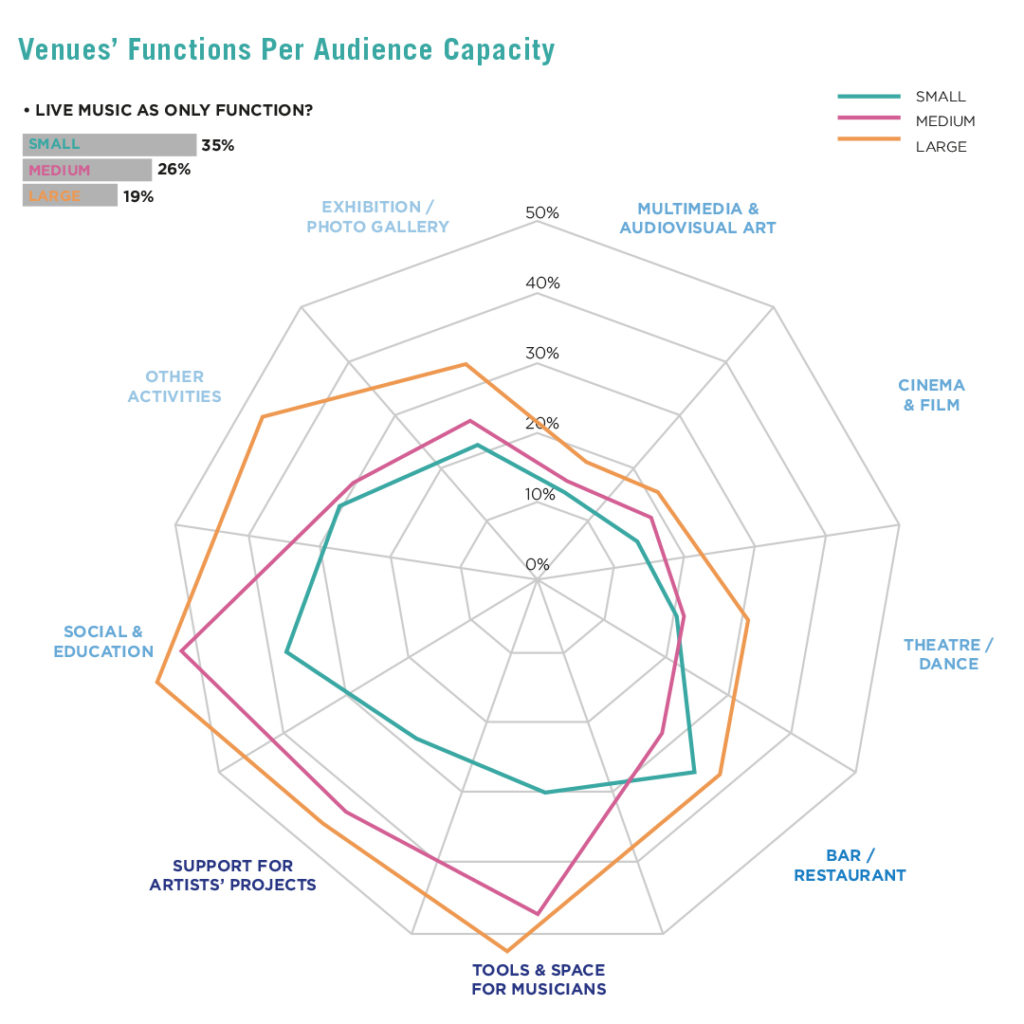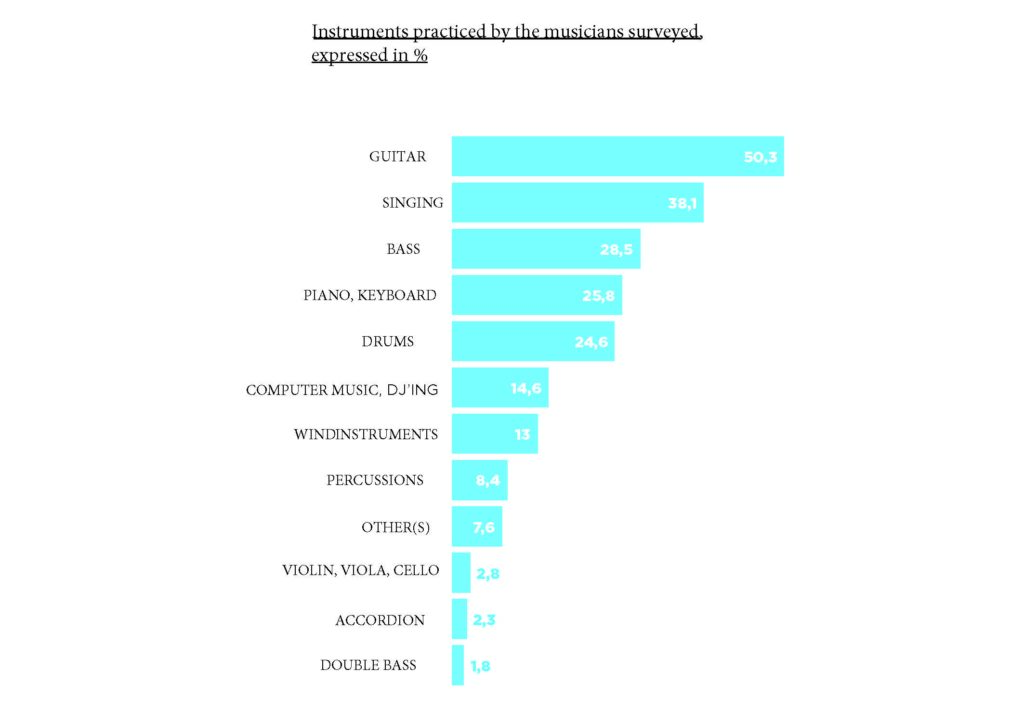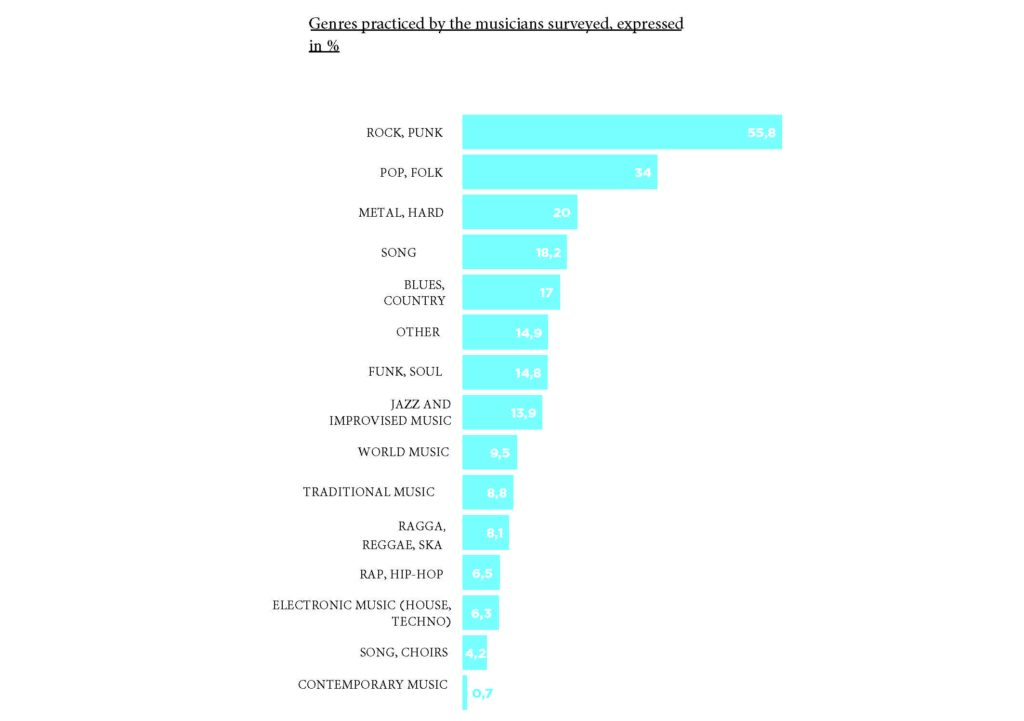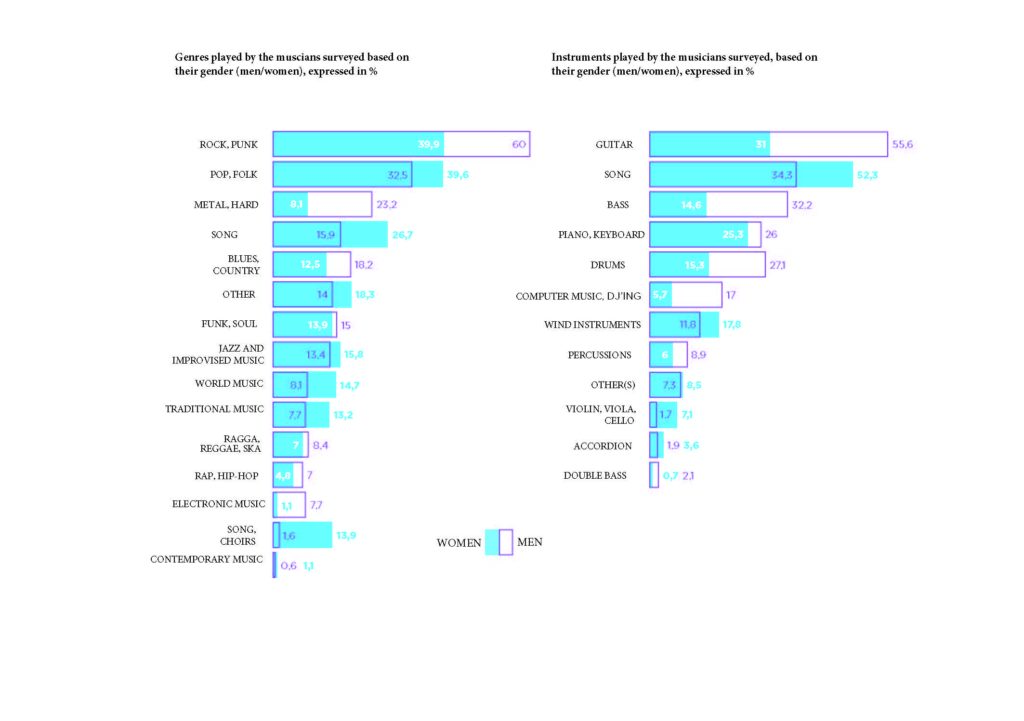According to a governmental study on the cultural practices of the French population, music is the first art practiced by French people. The practice of music is a cultural expression that enables people to become cultural actors and not only consumers. In that sense, the practice of music is rooted in the cultural rights of the Fribourg Declaration as it puts into action one’s participation in cultural life and their emancipation through a cultural activity.
This study, which was developed over 2 years, intends to define who are the people practising music in a non-professional way, that is, music not being their main source of income. What instruments do they play? What music genre? What are their musical paths? To answer these questions, an online questionnaire was released to collect quantitative data among 1310 amateur musicians. Qualitative data was collected through face-to-face interviews, in which 101 musicians and 25 music professionals took part in.
As highlighted in the Survey publication 2020, live music scenes often offer more than just concerts: many of them also have the function of “Support to artistic projects” and “Tools and space for musicians”. Amateur practices of music is thus a crucial part of many live music venues’ activities in Europe.

Definition of ‘Amateur Practices’
Amateur practices are often considered as leisure activities, a hobby confined to the private circle. They are also seen only as a first step towards professionalisation: amateurs are perceived as not mastering the art of music yet, and this activity is not considered as appealing to an audience. Amateur practices are not inserted in a market logic.
This is why, as the study explains, there is a lack of support for these practices within the cultural public policies and in the strategy of live music scenes, although it is part of the missions of the “SMAC” venues, labelled by the French Ministry of Culture. Support to amateur musical practices is often seen only through the prism of career development and entry into the music market.
Yet, the reality of amateur musicians is more complex: their desire for artistic expression transcends the market logic. This study rather focuses on amateur practices as the exercise of freedom of expression, the emancipation dimension of the practice of popular music, the relationship of these musicians toward eachother and their environment. It aims at opening leads on the manner of accompanying everyone in a realization of themselves through the practice of popular music (jazz and improvised music, chanson française, traditional music, electro-amplified music (rock, blues, r&b, hiphop, reggae, electro…), choirs & fanfares).
Respondant’s Profile
- Average age of 36 years old
- Only 2 out of 10 respondants are women
- “executive and intellectual professions”, “intermediate professions”, “craftspersons, shopkeepers and directors of companies” and “students and unemployed” are over-represented within the amateur musicians surveyed for this study, compared to the national average
- “employees”, “farmers”, “blue-collar workers” and “retired people” are under-represented in the amateur musicians surveyed for this study, compared to the national average


Main Results of the Study
- Family-based musical transmission in the childhood is essential: transmission by impregnation, informal learning of music.
- Parents are almost always at the origin of formal learning of music (e.g. children registered in music courses and conservatoires).
- Musical practices are strongly linked to identity, especially during the teenage or young adult years. Collective music practices are a way to break out from the family, especially for older interviewees.
- Gender: there are more women in music genres where there is a significant place to “feminized” instruments = pop/folk, world music, traditional music and choirs.

- This categorization of instruments or genres per gender starts from socialisation based on gender stereotypes in childhood: technicity is linked to manhood whereas the body is associated with womanhood.
- Formal learning is the norm in childhood.
- Informal learning and self-education come in the adult years.
Main Results of the Study in Regards with Live Music Scenes
- Live music venues which offer “tools & spaces for musicians” and/or “support for artist’s projects” are spaces that create the right conditions for a free, informal and collective practice of music. This is done notably through jam sessions, musical springboards, open stage nights or amateur nights in front of an audience.
- 43,8% of respondants declared they practiced their music “within a specialised organisation”. This includes conservatoires as well as live music venues.
- Live music scenes are spaces of musical socialisation.
- The musicians surveyed in the qualitative interviews emphasized the benefits of collective amateur practices of music, notably when they play onstage. They declared playing in front of an audience is a dynamising experience, which boosts up self confidence.
- 63,5% of respondants said they used “spaces of artistic practice” to rehearse.
- Respondants also highlighted the crucial role of live music scenes in accompanying their musical project.
- 93% of people interviewed have an experience onstage, but these experiences vary: from one concert for the Fête de la musique [a day devoted to live music, initiated by the French Ministry of Culture in the 1980s. On this day, free concerts are organised everywhere in France] or the village’s fest, to several concerts per year. Over one third of interviewees make over 9 concerts per year.
- Bars are the first live music scenes mentioned by the interviewees. They are the first chain link of the popular music chain. They constitute the first scenic experience and the first meeting with an audience for many amateur musicians.
- Yet, some musicians declared there was a discrepancy between amateur practices and the commercial logic of bars: shows need to be cost-effective, the sound regulations bars need to comply with are not always in accordance with all music genres, etc.
- The respondants highlighted the fact that they lack ressources to find concert dates by themselves. In that sense, live music scenes constitute good intermediaries for amateurs to play onstage.
Conclusion
Amateur practices go beyond the market sphere: they are source of personal and social development and emancipation. The goal of this FEDELIMA study is that these are taken into consideration in future policies.
